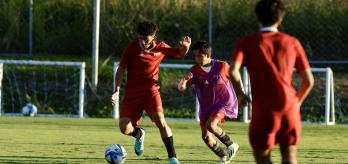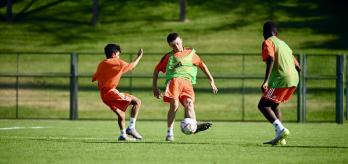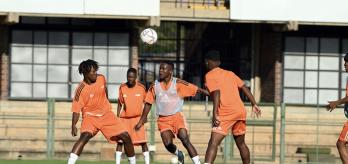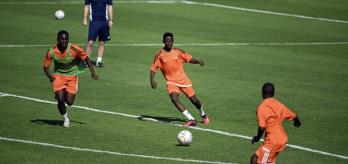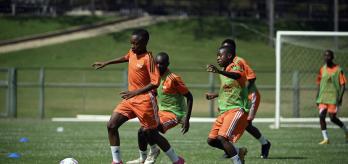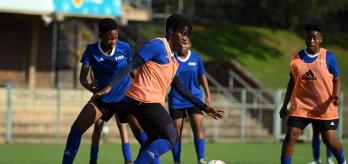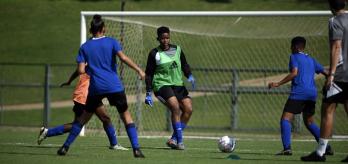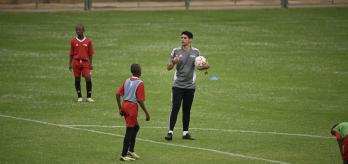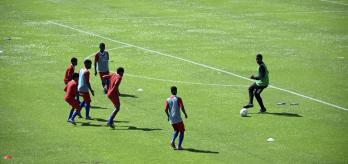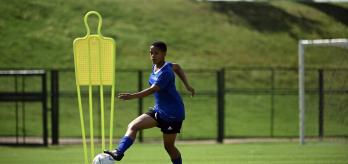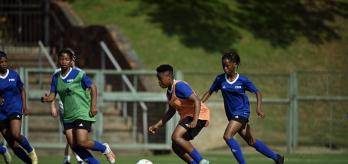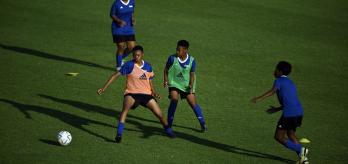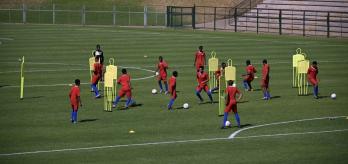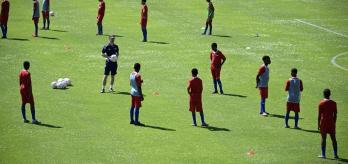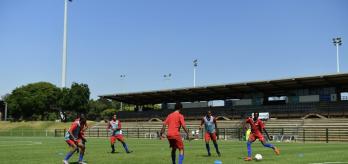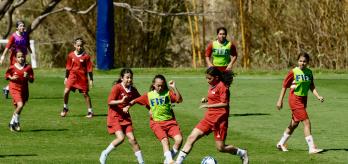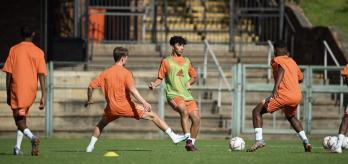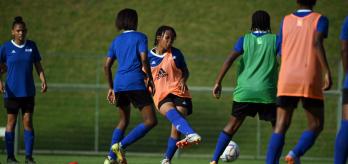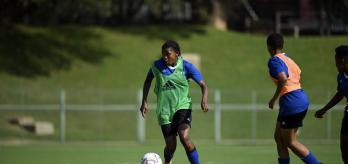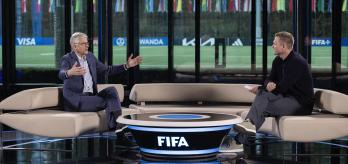Méthodologie
Sur quoi travaille-t-on ?
Ce circuit de passes avec opposition développe la capacité du joueur à recevoir le ballon dans l’espace, puis à partir rapidement en conduite pour s’éloigner de la pression exercée derrière lui. Le circuit met l’accent sur des aspects individuels tels que la qualité de la prise de balle et la capacité à échapper au pressing tout en se mettant dans le sens du jeu sur son contrôle. La posture et l’orientation du corps sont déterminantes pour réaliser l’exercice efficacement. À la réception du ballon, le joueur doit se placer de trois-quarts puis ajuster ses appuis pour attaquer l’espace balle au pied. Les joueurs doivent réaliser le circuit à haute intensité, s’écarter rapidement du mannequin et prendre l’espace en effectuant le moins de touches de balle possible.
À quelle échelle travaille-t-on ?
Ce circuit centré sur l’aspect individuel met l’accent sur la réception du ballon sous pression et la capacité à prendre l’espace. Il ne reproduit pas une phase de jeu spécifique mais permet de s’entraîner à recevoir le ballon malgré la pression adverse, en ayant peu de temps et d’espace pour faire progresser le jeu. Les joueurs qui évoluent au cœur du bloc adverse et ont pour mission de faire remonter le ballon entre des adversaires vers la ligne défensive suivante sont ceux qui tireront le plus profit de ce circuit, qui n’est toutefois pas lié à un poste spécifique.
Comment cet exercice a-t-il été pensé ?
Cet exercice propose un circuit de passes dans une zone relativement réduite. Il met l’accent sur l’orientation du corps et la maîtrise du ballon. Les mannequins servent de repères pour indiquer aux joueurs vers où ils doivent se démarquer afin de recevoir le ballon sans opposition. Le départ différé du défenseur demande une concentration, une intensité et une précision renforcées pour gérer ces situations, ce qui reproduit fidèlement les conditions d’un match. La porte formée par les cônes sert de cible au receveur qui doit partir en conduite et simuler une remontée de balle entre deux défenseurs situés plus haut sur le terrain.
Plan de la séance
Organisation
-
Placer deux mannequins, deux portes formées avec des cônes, deux « stations de passes » et deux « stations de pressing », comme indiqué sur l’image ci-dessus.
-
Constituer deux équipes de 6 (orange et bleue).
-
Placer trois joueurs orange à une station de passes et trois joueurs bleus à l’autre, et donner un ballon à chaque joueur.
-
Placer deux joueurs orange à la station de pressing la plus proche de la station de passes occupée par les trois joueurs bleus.
-
Placer deux joueurs bleus à la station de pressing la plus proche de la station de passes occupée par les trois joueurs orange.
-
Placer un joueur de chaque équipe au niveau du mannequin situé le plus près de sa station de passes.
Explication
-
Le circuit débute lorsque le joueur de la station de passes envoie le ballon à l’extérieur du mannequin où se trouve son coéquipier de façon à ce que ce dernier puisse prendre la profondeur.
-
Le joueur placé au niveau du mannequin s’en écarte pour recevoir le ballon dans l’espace, effectue un contrôle orienté vers l’avant puis part en conduite vers la porte.
-
Dès que la passe initiale est effectuée, le défenseur adverse sprinte depuis sa station vers le receveur afin de le mettre sous pression.
-
Les joueurs changent de station en tournant dans le sens antihoraire.
-
Le circuit s’effectue simultanément dans les sens horaire et antihoraire.
Éléments techniques clés :
Rôle des entraîneurs
-
Entraîneur 1 : Dirige la séance et se place au centre du circuit afin de pouvoir conseiller les joueurs sur leur orientation et leur technique.
-
Entraîneur 2 : surveille le temps depuis sa position sur un côté du circuit.
-
Entraîneur 3 : observe l’orientation et la technique des joueurs depuis sa position, située du côté opposé à celui du deuxième entraîneur.




















